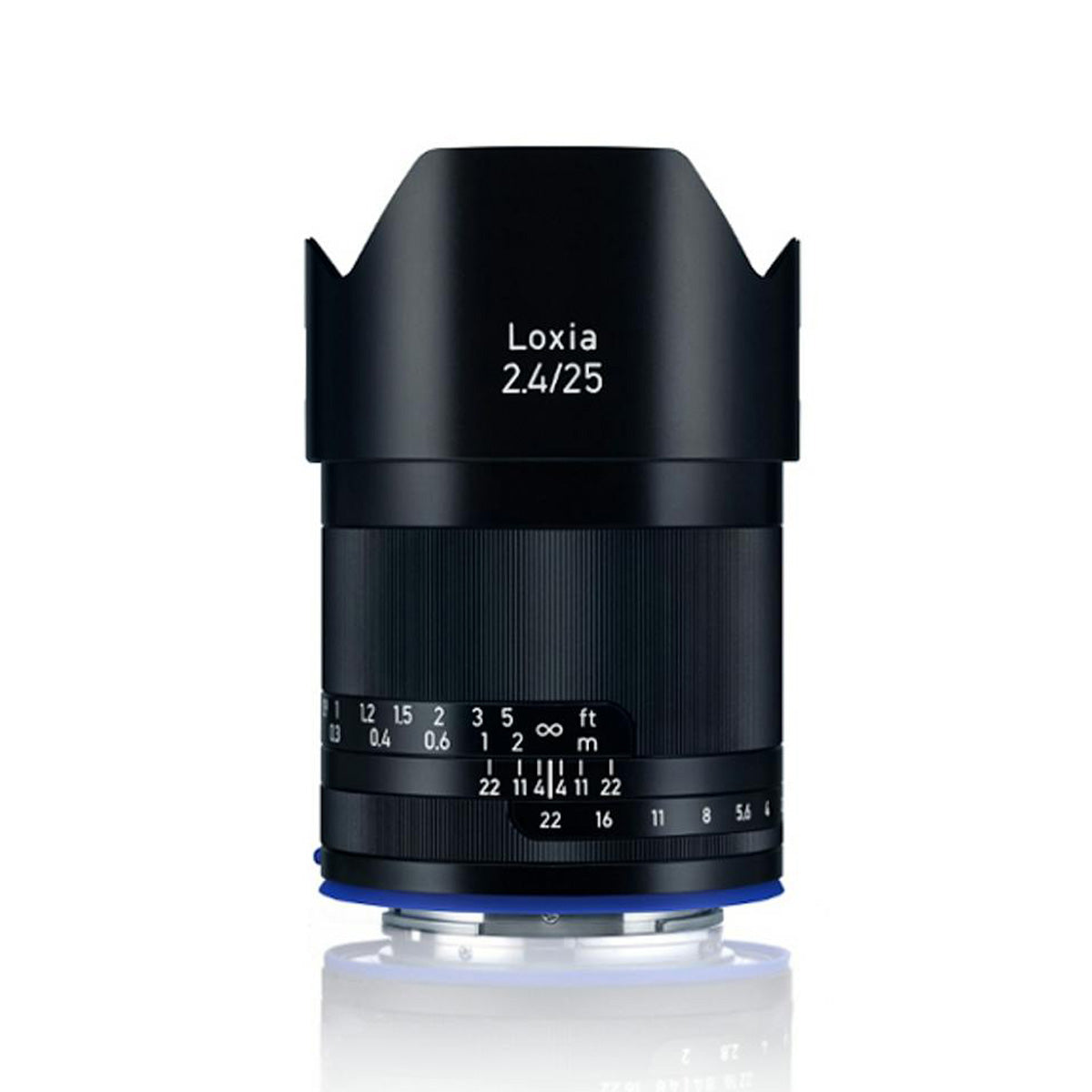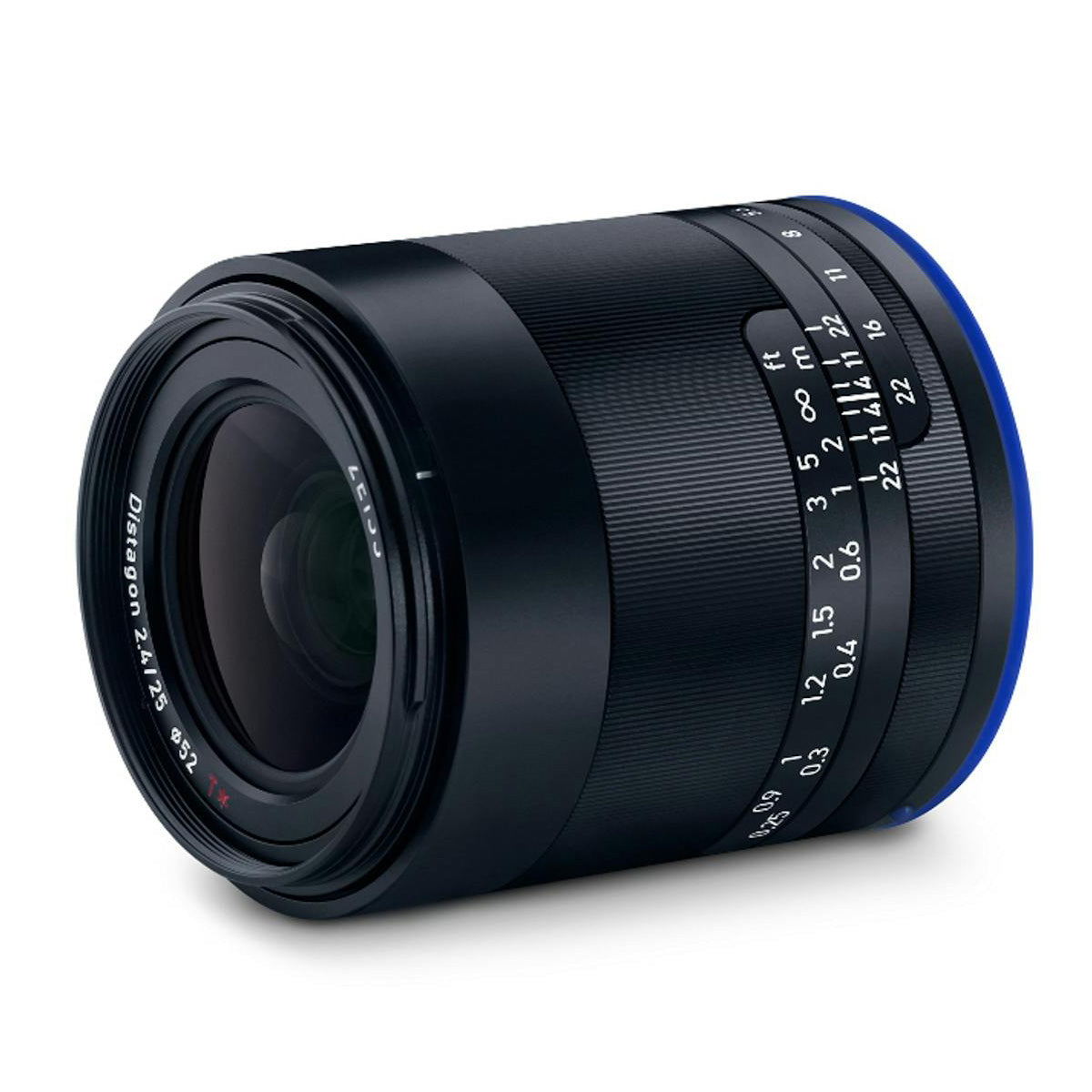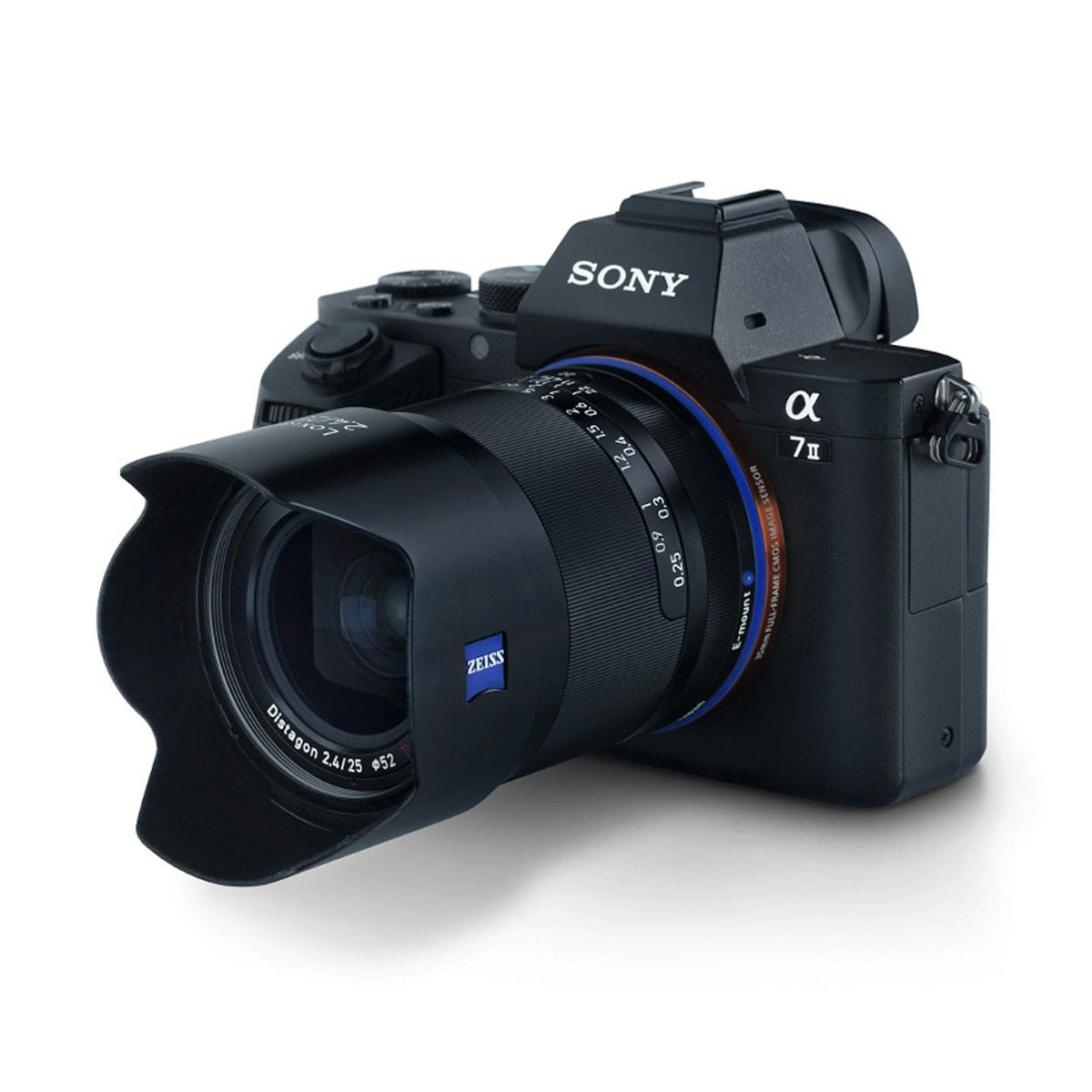Product Description
Zeiss Loxia 25mm f/2.4 Lens for Sony E-Mount Mirrorless Cameras
Manual Precision, Wide-Angle Creativity – Built for Full-Frame Sony Alpha Systems
The Zeiss Loxia 25mm f/2.4 is a premium wide-angle prime lens designed exclusively for Sony full-frame E-mount mirrorless cameras. Crafted with meticulous attention to detail, this compact yet powerful lens delivers exceptional image quality, precise manual focusing, and robust all-metal construction. Whether you're shooting stills or video, the Loxia 25mm f/2.4 is the perfect tool for professionals and enthusiasts who demand clarity, control, and creativity.
Designed for Sony Full-Frame E-Mount
Engineered specifically for Sony Alpha mirrorless systems, this manual-focus lens is fully optimised for full-frame (24x36mm) sensors, providing edge-to-edge sharpness, natural contrast, and rich colour reproduction. The 25mm focal length offers a versatile wide-angle view, ideal for landscapes, architecture, street photography, and documentary work.
Key Optical & Mechanical Features
Virtually Distortion-Free Wide-Angle Optics
The Distagon optical design paired with Zeiss’s renowned T anti-reflective coating* ensures superb sharpness, clarity, and virtually zero distortion — even at wide apertures. Straight lines stay straight, colours are lifelike, and fine details are rendered with astonishing precision.
Precise Manual Focusing with Long Rotation Throw
A large rotation angle and ultra-smooth focusing mechanism provide highly precise control, allowing you to achieve pinpoint focus — perfect for both photographers and videographers. Engraved depth-of-field and distance scales aid in manual zone focusing and hyperfocal techniques.
DeClick Aperture Function for Filmmakers
The DeClick feature lets you mechanically disengage aperture clicks for smooth, silent adjustments — ideal for video recording and cinematic transitions. Simply use the supplied tool to unlock the detent mechanism on the aperture ring.
Premium Build Quality for Professional Use
Full-Metal Housing
Constructed entirely of high-grade metal, including the focus and aperture rings, the Loxia 25mm f/2.4 is built for durability in the field. Its tactile feel and precision machining reflect the standard ZEISS users expect.
Weather-Sealed Bayonet Mount
A special sealing ring on the bayonet protects the connection between lens and camera, offering an extra layer of defence against dust and moisture — essential for outdoor photography in challenging environments.
Key Specifications:
-
Focal Length: 25mm
-
Maximum Aperture: f/2.4
-
Lens Mount: Sony E (Full Frame)
-
Format Compatibility: Full-Frame (35mm)
-
Focus Type: Manual focus
-
Aperture Control: Manual, with DeClick feature
-
Minimum Focus Distance: 0.25 m (9.8 in)
-
Angle of View (Full Frame): Approx. 81°
-
Optical Design: Distagon with virtually zero distortion
-
Coating: ZEISS T* anti-reflective coating
-
Filter Thread: 52mm
-
Dimensions: Compact and lightweight
-
Build: Full-metal construction with weather-sealed mount
Ideal For:
-
Landscape and architectural photography
-
Environmental portraiture and street scenes
-
Filmmakers requiring silent aperture control
-
Photojournalism and documentary projects
-
Sony mirrorless shooters seeking ultimate manual precision
Compact Wide-Angle Excellence
The Zeiss Loxia 25mm f/2.4 for Sony E-mount is a professional-grade lens that combines outstanding optical quality, mechanical precision, and intelligent design. Whether you're capturing sweeping landscapes, intimate spaces, or cinematic footage, this lens delivers results that reflect the legendary ZEISS standard — every time.
Payment & Security
Your payment information is processed securely. We do not store credit card details nor have access to your credit card information.





















